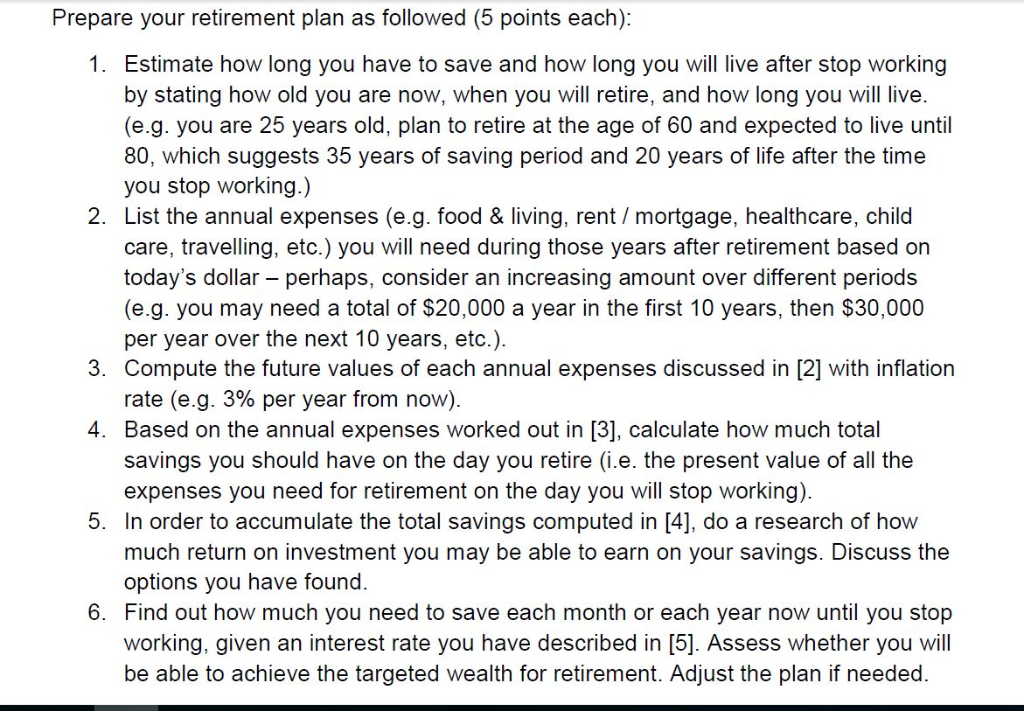
Prepare your retirement plan as followed (5 points each): 1. Estimate how long you have to save and how long you will live after stop working by stating how old you are now, when you will retire, and how long you will live. (e.g. you are 25 years old, plan to retire at the age of 60 and expected to live until 80, which suggests 35 years of saving period and 20 years of life after the time you stop working.) 2. List the annual expenses (e.g. food & living, rent /mortgage, healthcare, child care, travelling, etc.) you will need during those years after retirement based on today's dollar - perhaps, consider an increasing amount over different periods (e.g. you may need a total of $20,000 a year in the first 10 years, then $30,000 per year over the next 10 years, etc.). Compute the future values of each annual expenses discussed in [2] with inflation rate (e.g. 3% per year from now). 3. 4. Based on the annual expenses worked out in [3], calculate how much total savings you should have on the day you retire (i.e. the present value of all the expenses you need for retirement on the day you will stop working). 5. In order to accumulate the total savings computed in [4], do a research of how much return on investment you may be able to earn on your savings. Discuss the options you have found. 6. Find out how much you need to save each month or each year now until you stop working, given an interest rate you have described in [5]. Assess whether you will be able to achieve the targeted wealth for retirement. Adjust the plan if needed. Prepare your retirement plan as followed (5 points each): 1. Estimate how long you have to save and how long you will live after stop working by stating how old you are now, when you will retire, and how long you will live. (e.g. you are 25 years old, plan to retire at the age of 60 and expected to live until 80, which suggests 35 years of saving period and 20 years of life after the time you stop working.) 2. List the annual expenses (e.g. food & living, rent /mortgage, healthcare, child care, travelling, etc.) you will need during those years after retirement based on today's dollar - perhaps, consider an increasing amount over different periods (e.g. you may need a total of $20,000 a year in the first 10 years, then $30,000 per year over the next 10 years, etc.). Compute the future values of each annual expenses discussed in [2] with inflation rate (e.g. 3% per year from now). 3. 4. Based on the annual expenses worked out in [3], calculate how much total savings you should have on the day you retire (i.e. the present value of all the expenses you need for retirement on the day you will stop working). 5. In order to accumulate the total savings computed in [4], do a research of how much return on investment you may be able to earn on your savings. Discuss the options you have found. 6. Find out how much you need to save each month or each year now until you stop working, given an interest rate you have described in [5]. Assess whether you will be able to achieve the targeted wealth for retirement. Adjust the plan if needed







